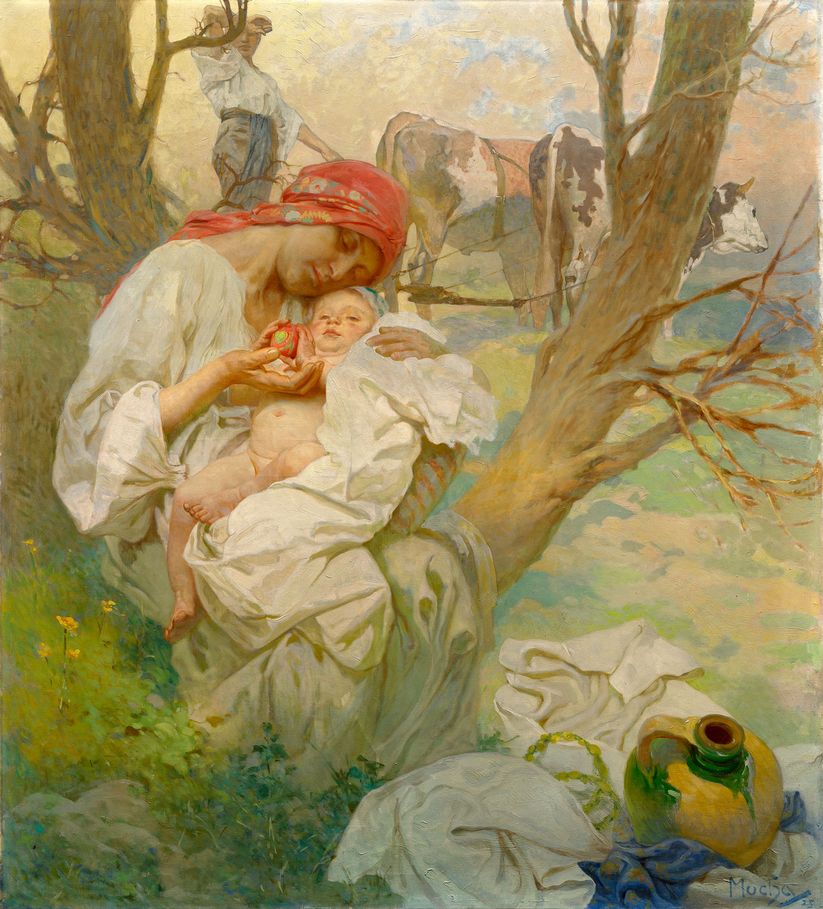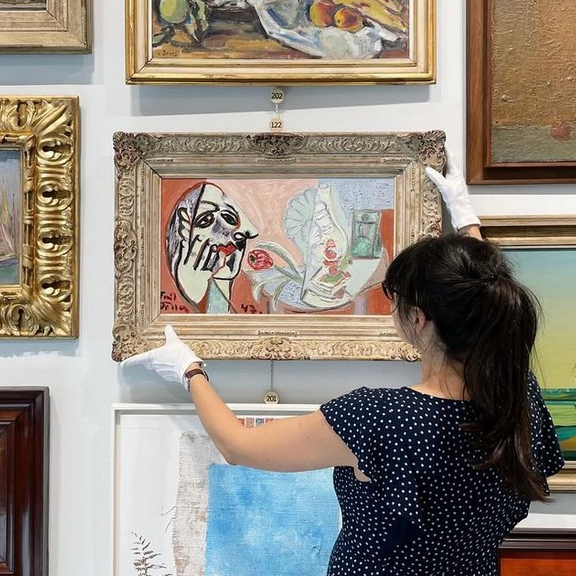
oil on canvas
1925
lower right
111 × 100 cm
frame
This masterfully executed work by the world-renowned Czech painter and distinctive representative of Art Nouveau, Alfons Mucha, represents a composition from his mature creative period when he had already finalised a set of twenty monumental paintings depicting the history of the Slavs – the Slavic Epic, officially completed in 1926. Alongside this large task, he was also working on large-scale paintings of elaborate compositions with allegorical or ethical subtext, similar to the one presented. In this work, Mucha demonstrates a new upsurge of creative powers, showing that he was able to break free from his world-famous style, primarily related to the posters created for the actress Sarah Bernhardt at the turn of the century. Constructed on two mutually balancing diagonals, the foreground of this particular composition is dominated by a woman dressed entirely in white, with a red ornamented headdress and an infant on her lap playing with a ball. In the background, a man stands wiping sweat from his forehead with two oxen in an oxcart. The composition of the whole scene is brilliantly and wittily steadied by a seemingly banal object in the lower right corner – a realistically depicted jug surrounded by wavy drapery. In this painting, we encounter Mucha’s thoughtful vision following his drawings executed before the mid-1890s, in which he dealt with the connection of a female figure and a tree. In this case, he seemingly followed the figural type of the Virgin Mary with Jesus Christ and combined the iconographic types of Madonna of Humility and Madonna Glykophilousa (“Sweet-kissing” or “Loving Kindness”). At the same time, he gave the scene a deep, lyrical touch of enlightenment radiating from the child’s body. In connection with the man on the horizon and his activities, this painting represents an attractively rendered family motif, which in the same year also inspired several other, often avant-garde artists such as Otto Gutfreund; it seems that even the choice of motif testifies to the social need of the time, where the family integrates into the awakening spring nature with an obvious pantheistic and pastoral impression. In the context of the artist’s portfolio of the 1920s, this long-lost and rediscovered work is an important link for understanding his artistic direction at that time. Soon after its execution, the painting was reproduced in the cultural press of the time (Collection of Artistic Paintings in a Book [Galerie Sbírka uměleckých obrazů v knize], year II, 1925/26, No. 7–8, 15. 12. 1926, fig. 46). Assessed during consultations by PhDr. Š. Leubnerová and John Mucha, the artist’s grandson. The expertise of PhDr. K. Srp is attached.







